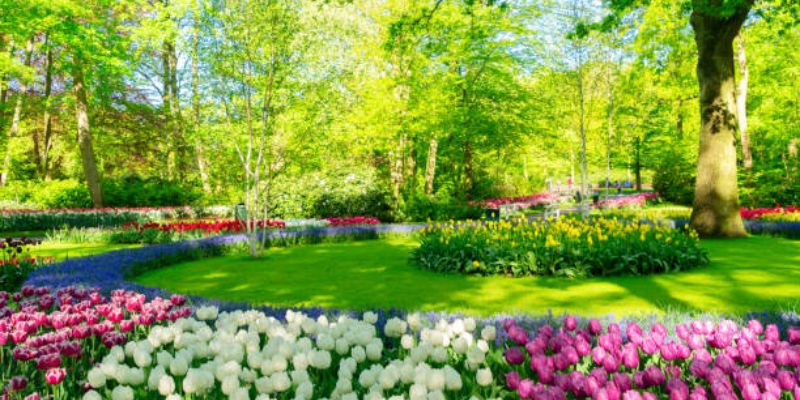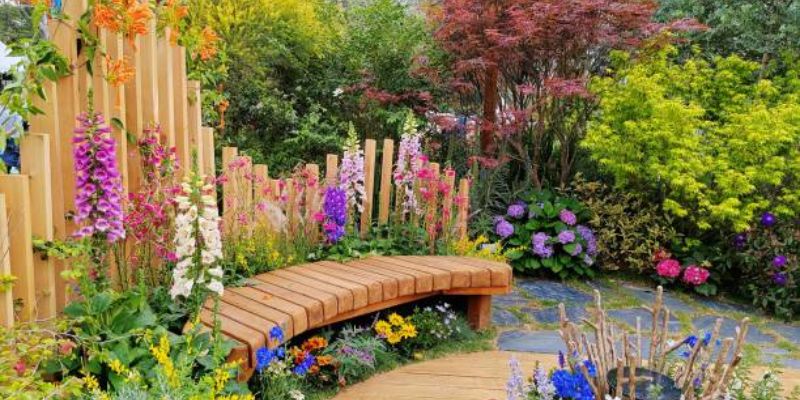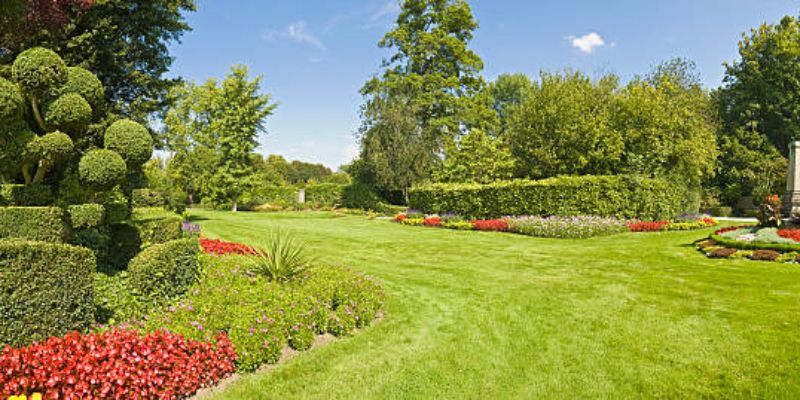12 Beautiful Gardens Around the World That Feel Like Heaven
Beautiful gardens around the world offer a calm escape from noise and stress. These places are known for still water, soft pathways, and colors that feel gentle on the eyes. Many travelers look for peaceful gardens when they want a quiet moment that feels almost unreal.
Some gardens are famous, while others are hidden, but they all share a feeling of balance and calm. This guide explains what makes these botanical gardens feel heavenly, what to notice when visiting, and how to have the most relaxing experience.
Why Certain Gardens Feel “Heavenly”
The Sense of Peace and Slowness
Heavenly gardens create a slow rhythm. Paths are spaced far apart and encourage quiet steps. The quiet allows the mind to settle.

Harmony Between Nature, Water, and Space
Many peaceful gardens use ponds, streams, or fountains to form gentle movement. Water reflects sunlight and adds soft sound.
Colors, Fragrances, and Natural Light
Bright flowers, green leaves, and light play a role in mood. These elements can make visitors feel welcome and calm.
Cultural and Spiritual Design Influences
Some world gardens are shaped by beliefs about balance. Zen gardens use stone and open space, while European gardens may use symmetry and water features.
How to Choose a Garden to Visit
Consider Travel Distance and Accessibility
If a garden is hard to reach, the visit may feel rushed. Choose one that fits your trip pace.
Seasonal Differences and Best Viewing Months
Some beautiful gardens bloom only in certain months. Spring and early summer are common peak seasons.
Matching Garden Style to Your Taste
Some travelers prefer dense forests, while others enjoy open lawns or formal shapes. Look for a style that fits your idea of calm.
Guided Tours vs Slow Solo Walks
Guided tours offer facts. Solo walks offer reflection. Pick based on your purpose.
The Most Beautiful Gardens Around the World That Feel Like Heaven
Keukenhof Gardens – Netherlands
Keukenhof is known for its endless tulip fields in spring. Paths curve among color displays. It is best to visit early in the morning before tour buses arrive.
Butchart Gardens – Canada
Butchart Gardens feature several themed “rooms.” Each spot has a different color palette and layout. It is ideal for slow loops and quiet seating.
Ryoan-ji Temple Gardens – Japan
This Zen garden uses stone and raked gravel. The space encourages silence and reflection. Visitors often sit still rather than walk.
Villa d’Este Gardens – Italy
Terraced fountains and carved stone details make this one of the world gardens known for movement and sunlight. Late afternoon light is especially soft here.

Singapore Botanic Gardens – Singapore
This tropical botanical garden includes huge shade trees and an orchid center. Cooler morning hours are best for slow walking.
Kirstenbosch National Botanical Garden – South Africa
Located near a mountain slope, this garden feels open and bright. The canopy walkway offers a calm view above the trees.
Jardin Majorelle – Morocco
This garden uses blue walls, tiled pools, and desert plants. The setting feels private and reflective. Early visits avoid crowds.
Longwood Gardens – United States
Longwood is known for fountains and glass conservatories. Seasonal displays change often. Walk the central conservatory first to avoid mid-day groups.
Hidden Gem Gardens That Also Feel Like Heaven
Nong Nooch Tropical Garden – Thailand
Large sculpted hedges, shaded walkways, and tropical flowers make this a vibrant break from city noise.
Powerscourt Gardens – Ireland
This garden features a wide lake and a backdrop of green peaks. It feels open and gentle during spring and summer.
Shalimar Bagh – India
This Mughal garden uses a layered walkway system, water channels, and shaded resting spaces, forming slow and steady movement.
Monte Palace Tropical Garden – Madeira
Cool mist, koi ponds, and moss-covered stone paths help this garden feel calm even on warm days.
How to Experience These Gardens in the Most Peaceful Way
Visit Early Morning or Before Closing
These times are quiet, allowing peaceful gardens to feel even calmer.
Take Your Time
Move slowly, stop often, and look at details like leaf texture or shadow shapes.
Find Quiet Corners
Some areas away from large paths offer longer silence.
Photograph Gently
Take photos without blocking views or rushing others.
Respect the Space
Stay on paths and keep voices low to protect the atmosphere.

Planning Your Own Garden Travel Journey
Garden travel can be simple with light planning. Some botanical gardens are free, while others require tickets. Always check hours and weather before leaving.
Group Tours vs Traveling Alone
Groups are helpful for first visits. Solo travel is best for silence and personal pace.
How to Find Gardens Near Any Destination
Most tourism offices or nature agencies list gardens. Reputable organizations like the Royal Horticultural Society share guides to garden styles.
Budget Tips
Bring water, comfortable shoes, and sun protection. Packing light helps keep the walk restful.
What to Pack
Soft shoes, a small bottle of water, and a light scarf for shade are often enough.
A Final Note on Beautiful Gardens Around the World That Feel Like Heaven
Beautiful gardens are more than plants. They are places where time slows down and the mind feels clear. Whether exploring famous world gardens or simple, peaceful gardens close to home, the calming effect is real and easy to access. Travelers can explore new places, connect with nature, and enjoy quiet moments that feel gentle and renewing.
For global inspiration on natural spaces, organizations like UNESCO and park networks such as the National Park Service highlight protected landscapes worth exploring.
Sources
- Learned practical methods
- Solved my questions
- Inspired new ideas









